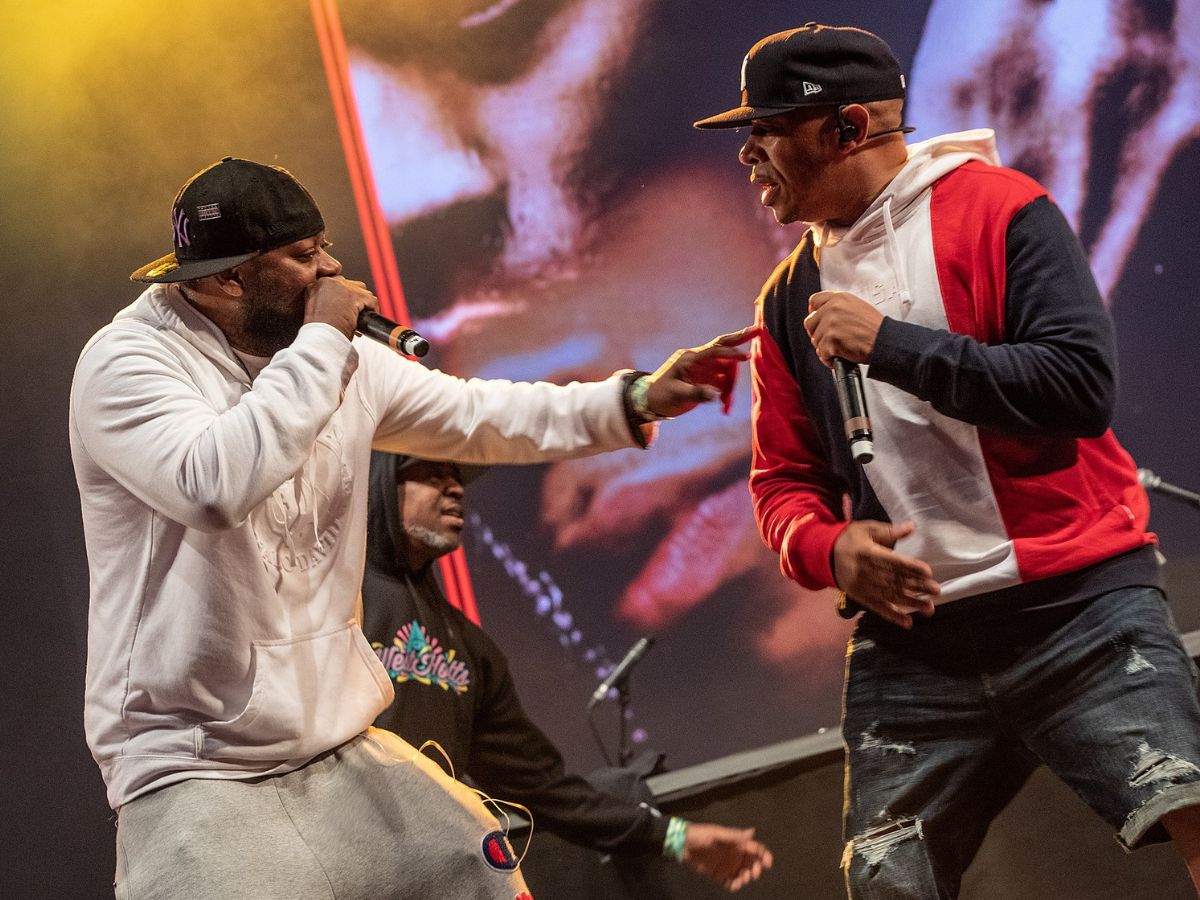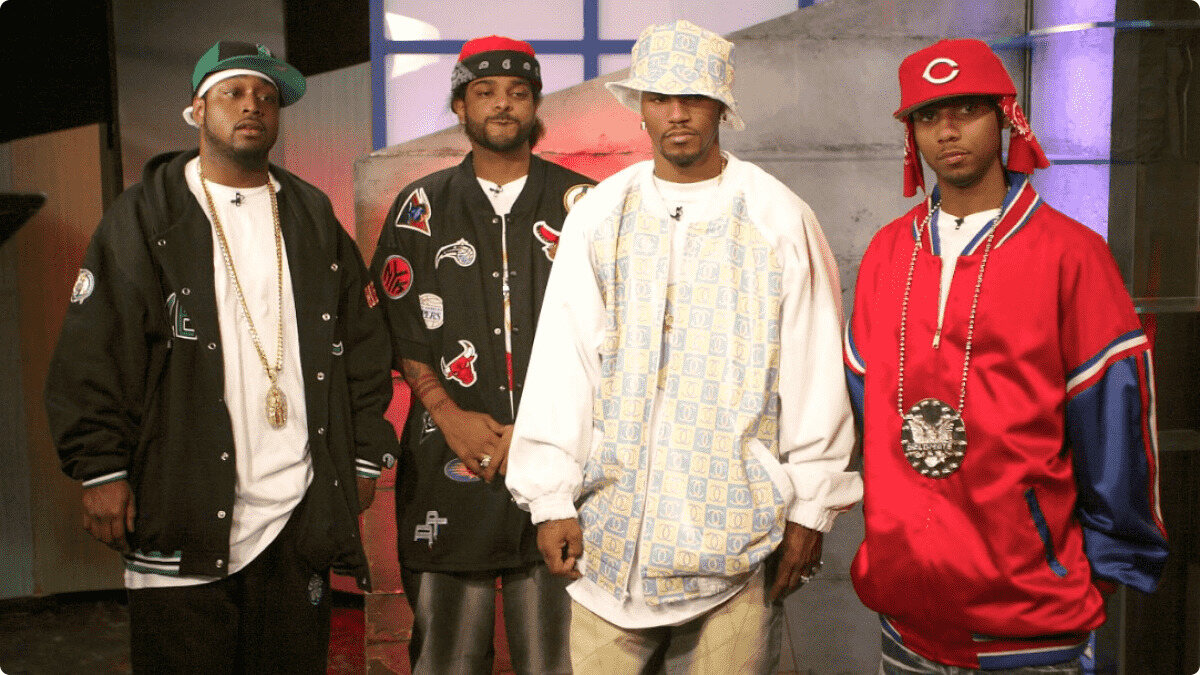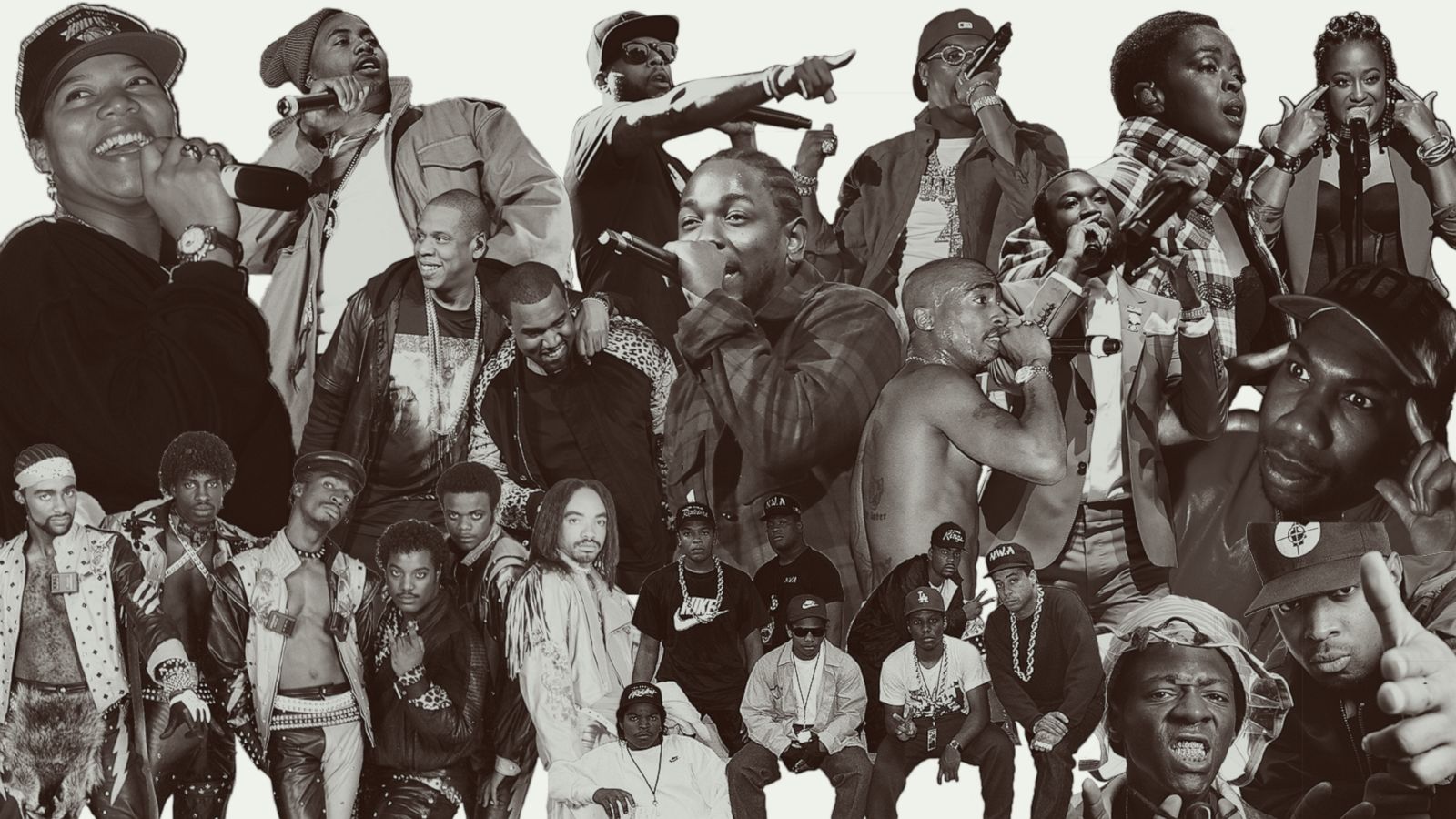Home>Production & Technology>Producer>How To Be A Music Producer For Hip Hop


Producer
How To Be A Music Producer For Hip Hop
Published: March 5, 2024
Learn how to become a successful music producer for hip hop with our expert tips and guidance. Master the skills and techniques needed to excel in the industry. Become a top producer today!
(Many of the links in this article redirect to a specific reviewed product. Your purchase of these products through affiliate links helps to generate commission for AudioLover.com, at no extra cost. Learn more)
Table of Contents
- Introduction
- Understanding the Hip Hop Genre
- Learning the Basics of Music Production
- Building Your Home Studio
- Choosing the Right Equipment
- Sampling and Beat Making
- Understanding Hip Hop Arrangement and Structure
- Developing Your Sound and Style
- Collaborating with Artists
- Marketing Yourself as a Music Producer
Introduction
Becoming a music producer for hip hop is an exciting journey that blends creativity, technical skill, and a deep understanding of the genre's unique characteristics. As a music producer, you have the opportunity to shape the sound and direction of hip hop music, working closely with artists to bring their vision to life. This role requires a combination of artistic intuition and technical prowess, making it an incredibly rewarding pursuit for those passionate about music and production.
In this comprehensive guide, we will explore the multifaceted world of hip hop music production, offering valuable insights and practical tips to help you embark on this fulfilling career path. Whether you're a budding producer eager to delve into the intricacies of beat making or an established musician looking to expand your production skills, this guide will equip you with the knowledge and resources needed to thrive in the dynamic realm of hip hop music production.
Throughout this journey, you will gain a deeper understanding of the hip hop genre, learn the fundamental principles of music production, and discover the essential tools and techniques required to craft compelling beats and tracks. Additionally, we will delve into the nuances of building a home studio, selecting the right equipment, and honing your unique sound and style as a music producer.
Furthermore, we will explore the art of sampling, beat making, and the intricacies of hip hop arrangement and structure, providing you with a holistic perspective on the creative process behind producing captivating hip hop music. As you progress, you will also uncover the significance of collaboration, both with artists and fellow producers, as well as the strategies for effectively marketing yourself in the competitive music industry.
By the end of this guide, you will be well-equipped to navigate the dynamic landscape of hip hop music production, armed with the knowledge, skills, and inspiration to embark on your journey as a proficient and innovative music producer in the realm of hip hop. So, let's dive into the vibrant world of hip hop music production and unlock the boundless potential that awaits you.
Understanding the Hip Hop Genre
Hip hop is a dynamic and influential genre that has transcended musical boundaries to become a global cultural phenomenon. Rooted in the vibrant streets of the Bronx, New York City, during the 1970s, hip hop has evolved into a multifaceted art form that encompasses music, dance, fashion, and visual arts. At its core, hip hop is characterized by its rhythmic beats, poetic lyrics, and a distinct urban aesthetic that reflects the lived experiences and social realities of its creators.
One of the defining elements of hip hop music is its emphasis on storytelling and lyrical prowess. From introspective narratives to socio-political commentary, hip hop lyrics serve as a powerful medium for expressing personal experiences, advocating for social justice, and articulating the aspirations and struggles of marginalized communities. This lyrical depth and authenticity have established hip hop as a platform for voicing societal issues and fostering meaningful dialogue.
In addition to its lyrical significance, hip hop is renowned for its innovative use of sampling and beat production. Producers often draw inspiration from a diverse range of musical genres, infusing their tracks with eclectic sounds and rhythms to create compelling sonic landscapes. The art of sampling, which involves recontextualizing snippets of existing recordings, has been instrumental in shaping the sonic identity of hip hop, giving rise to iconic beats and melodies that resonate across generations.
Furthermore, hip hop's cultural impact extends beyond music, influencing fashion trends, language, and visual arts. The genre's bold and expressive aesthetic has permeated mainstream culture, shaping the creative landscape and providing a platform for self-expression and individuality. From graffiti art to street fashion, hip hop has fostered a rich tapestry of artistic innovation, serving as a catalyst for cultural exchange and artistic collaboration.
Aspiring music producers entering the world of hip hop must immerse themselves in the genre's rich history and cultural significance. Understanding the socio-cultural context from which hip hop emerged is crucial for appreciating its artistic depth and relevance. By embracing the genre's ethos of creativity, resilience, and authenticity, producers can channel these values into their music, contributing to the ongoing evolution of hip hop as a global cultural force.
In essence, the hip hop genre embodies a spirit of creativity, resilience, and cultural expression, serving as a powerful medium for storytelling, artistic innovation, and social commentary. Aspiring music producers embarking on their hip hop journey must honor the genre's legacy while pushing the boundaries of creative expression, contributing to the vibrant tapestry of hip hop culture with their unique artistic vision and passion for musical innovation.
Learning the Basics of Music Production
Music production is a multifaceted discipline that encompasses the technical, creative, and artistic aspects of crafting compelling musical compositions. Aspiring music producers embarking on their hip hop journey must equip themselves with a solid foundation in music production fundamentals to effectively translate their creative vision into captivating soundscapes.
To begin, gaining a comprehensive understanding of music theory is essential. Familiarizing oneself with key concepts such as harmony, melody, rhythm, and chord progressions lays the groundwork for creating cohesive and melodically rich hip hop compositions. Additionally, studying the nuances of scale and tonality empowers producers to craft harmonically engaging tracks that resonate with listeners.
Moreover, delving into the intricacies of digital audio workstations (DAWs) is paramount. These software platforms serve as the creative hub for music production, providing a versatile toolkit for recording, editing, arranging, and mixing audio. Acquiring proficiency in popular DAWs such as Ableton Live, FL Studio, or Logic Pro enables producers to harness the full potential of digital production, unleashing their creativity through intuitive interfaces and powerful audio processing capabilities.
Understanding the role of sound design is equally crucial in music production. Producers must familiarize themselves with synthesizers, samplers, and audio effects to sculpt unique and evocative sounds that define the sonic identity of their compositions. By mastering sound design techniques, producers can infuse their tracks with distinctive textures, atmospheres, and sonic motifs that elevate the overall listening experience.
Furthermore, developing proficiency in audio mixing and mastering is essential for achieving professional-grade sound quality. Learning the principles of equalization, compression, spatial effects, and mastering techniques empowers producers to refine the sonic balance and clarity of their mixes, ensuring that their compositions translate seamlessly across various playback systems.
In essence, mastering the basics of music production equips aspiring hip hop producers with the knowledge and skills needed to navigate the dynamic landscape of modern music production. By honing their understanding of music theory, digital audio workstations, sound design, and audio engineering, producers can elevate their creative prowess and embark on a fulfilling journey of sonic innovation within the vibrant realm of hip hop music production.
Building Your Home Studio
Creating a dedicated space for music production is a pivotal step for aspiring hip hop producers. Building a home studio provides a conducive environment for creativity, experimentation, and focused artistic expression. Whether you're a seasoned producer or just starting your musical journey, establishing a well-equipped home studio can significantly enhance your productivity and the quality of your productions.
First and foremost, selecting an appropriate space for your home studio is crucial. Ideally, the chosen area should offer sufficient space for your equipment, promote a comfortable working environment, and minimize external noise interference. Consider factors such as natural lighting, acoustics, and accessibility when choosing the location for your studio, as these elements can significantly impact your creative workflow and overall comfort.
Next, investing in quality studio furniture and acoustic treatment is paramount. A sturdy desk or workstation tailored to accommodate your equipment, such as monitors, controllers, and audio interfaces, promotes an organized and ergonomic setup. Additionally, integrating acoustic panels, bass traps, and diffusers within your studio space helps mitigate unwanted reflections and resonances, ensuring a more accurate and controlled listening environment for critical mixing and sound design tasks.
Equipping your home studio with professional-grade monitoring systems is essential for precise audio reproduction. High-quality studio monitors or headphones enable producers to discern subtle nuances in their mixes, facilitating informed decision-making during the production and mixing stages. Furthermore, integrating acoustic calibration software can optimize the performance of your monitoring setup, compensating for room acoustics and ensuring accurate sound representation.
In addition to monitoring systems, investing in versatile microphones, audio interfaces, and signal processing equipment expands the sonic palette available for recording and production. Selecting microphones tailored to capture the nuances of vocal performances, instruments, and sound effects empowers producers to capture high-fidelity audio recordings with clarity and depth. Furthermore, integrating quality preamps, compressors, and equalizers enhances the sonic integrity and flexibility of your recording chain, facilitating professional-grade audio capture and processing.
Lastly, organizing and optimizing your studio setup for efficient workflow is paramount. Implementing cable management solutions, ergonomic furniture arrangements, and intuitive signal routing streamlines your creative process, allowing you to focus on the artistic aspects of music production without technical distractions. Additionally, integrating storage solutions for instruments, cables, and accessories maintains a clutter-free and inspiring studio environment, fostering a conducive space for musical creativity.
By meticulously curating and refining your home studio, you create a tailored environment that empowers you to channel your artistic vision and technical expertise into compelling hip hop productions. Your home studio becomes a sanctuary for musical exploration and sonic innovation, providing the foundation for your creative journey as a hip hop music producer.
Choosing the Right Equipment
Selecting the right equipment is a pivotal aspect of establishing a proficient home studio for hip hop music production. The choice of equipment significantly influences the sonic character, creative flexibility, and technical capabilities available to producers, shaping the overall quality and artistic potential of their musical compositions. By carefully curating a selection of essential gear, producers can empower themselves to craft compelling beats, capture pristine audio recordings, and sculpt captivating sonic landscapes within the dynamic realm of hip hop music production.
When it comes to choosing studio monitors or headphones, prioritizing accuracy and transparency is paramount. High-quality studio monitors with a flat frequency response and detailed transient reproduction facilitate precise audio monitoring, enabling producers to make informed decisions during the mixing and mastering stages. Additionally, investing in reliable headphones tailored for critical listening allows for consistent sonic evaluation across different playback systems, ensuring the fidelity and coherence of hip hop compositions.
Equipping the home studio with a versatile microphone collection is essential for capturing diverse sound sources with clarity and fidelity. Dynamic and condenser microphones tailored for vocals, percussion, and instruments provide a comprehensive recording toolkit, enabling producers to capture expressive performances and intricate sonic textures. Furthermore, integrating specialty microphones such as ribbon or shotgun mics expands the sonic palette available for experimentation, offering unique tonal characteristics and sonic perspectives for creative exploration.
In the realm of audio interfaces and preamps, prioritizing audio fidelity, connectivity options, and ergonomic design enhances the recording and processing capabilities of the home studio. High-resolution audio interfaces with low-latency monitoring, comprehensive I/O options, and transparent preamps facilitate seamless integration with recording software and external hardware, ensuring optimal signal capture and processing. Additionally, incorporating analog preamps and channel strips imbues recordings with warmth, character, and sonic depth, enriching the sonic palette available for music production.
Furthermore, integrating MIDI controllers, synthesizers, and drum machines expands the creative toolkit available to producers, fostering intuitive and expressive music creation. MIDI controllers with responsive pads, keys, and encoders provide tactile control over virtual instruments and software parameters, enhancing the hands-on creative experience. Additionally, incorporating versatile synthesizers and drum machines empowers producers to craft evocative melodies, intricate rhythms, and textural elements that define the sonic identity of their hip hop compositions.
By carefully selecting studio monitors, microphones, audio interfaces, and creative tools tailored to their artistic vision, producers can cultivate a home studio environment that fosters creativity, innovation, and sonic excellence. The right equipment serves as a conduit for musical expression, enabling producers to translate their creative vision into captivating hip hop compositions that resonate with audiences worldwide.
Sampling and Beat Making
Sampling and beat making are integral components of hip hop music production, serving as the creative foundation for crafting compelling tracks and sonic landscapes. The art of sampling involves recontextualizing snippets of existing recordings, extracting distinctive sounds, melodies, and rhythms to create new musical compositions. This process of sonic collage enables producers to draw inspiration from a diverse array of musical genres, infusing their tracks with eclectic textures and evocative sonic motifs.
When embarking on the journey of sampling, producers must approach the process with a keen ear for sonic exploration and a discerning selection of source material. Delving into a vast repository of vinyl records, digital archives, and audio recordings, producers seek out captivating fragments that resonate with their creative vision. Whether it's a soulful vocal riff, a hypnotic drum break, or a lush instrumental passage, the art of sampling hinges on identifying sonic elements that evoke emotion, nostalgia, or intrigue.
Once the sampling material is curated, producers employ digital audio workstations (DAWs) and sampling software to manipulate, sequence, and transform the selected fragments into cohesive musical arrangements. Through the use of slicing, time-stretching, and pitch-shifting techniques, producers craft intricate patterns, melodic phrases, and rhythmic foundations that form the backbone of their compositions. This meticulous process of sonic manipulation and arrangement allows producers to breathe new life into sampled material, reshaping its sonic identity and imbuing it with a contemporary aesthetic.
In tandem with sampling, beat making constitutes the rhythmic framework that underpins hip hop compositions. Producers harness drum machines, samplers, and virtual instruments to construct compelling drum patterns, percussion grooves, and melodic elements that define the rhythmic character of their tracks. Whether it's crafting hard-hitting drum sequences, layering intricate percussion textures, or integrating melodic motifs, beat making is a dynamic and expressive process that shapes the sonic identity of hip hop music.
Moreover, the art of beat making extends beyond rhythmic construction, encompassing the manipulation of sound textures, the integration of sonic effects, and the incorporation of atmospheric elements. Producers leverage sound design techniques, audio processing tools, and creative experimentation to sculpt immersive sonic landscapes that captivate listeners and evoke emotional resonance. By infusing their beats with depth, dynamics, and sonic intricacies, producers elevate their compositions, creating immersive sonic environments that transport audiences into the heart of their musical narratives.
In essence, sampling and beat making represent the creative essence of hip hop music production, offering producers a boundless canvas for sonic innovation and artistic expression. Through the artful curation of sampled material and the dynamic construction of rhythmic frameworks, producers infuse their compositions with authenticity, depth, and a compelling sonic identity that resonates with audiences worldwide.
Understanding Hip Hop Arrangement and Structure
Understanding the arrangement and structure of hip hop compositions is pivotal for producers seeking to craft captivating and cohesive musical narratives. Hip hop, as a genre, embraces a diverse array of sonic elements and stylistic nuances, necessitating a nuanced understanding of arrangement principles to create compositions that engage and resonate with audiences.
At its core, hip hop arrangement revolves around the interplay of rhythmic foundations, melodic motifs, vocal performances, and sonic textures. Producers meticulously craft the progression and evolution of these elements throughout the duration of a track, shaping the dynamic arc of the composition and guiding the listener through a compelling sonic journey.
The arrangement of a hip hop track typically begins with an evocative introduction, setting the tone and establishing the sonic palette that will unfold throughout the composition. This introductory phase serves as a crucial opportunity for producers to captivate listeners, drawing them into the sonic world of the track and laying the groundwork for the narrative to unfold.
As the composition progresses, producers navigate the interplay of verses, hooks, and bridges, each serving a distinct role in advancing the lyrical and musical themes of the track. Verses provide a platform for lyrical storytelling and expressive vocal performances, while hooks offer memorable and infectious motifs that anchor the composition, leaving a lasting impression on listeners. Bridges, on the other hand, introduce dynamic shifts and transitions, adding variety and intrigue to the sonic landscape.
Furthermore, the arrangement of hip hop compositions encompasses the strategic implementation of sonic dynamics, structural variations, and textural developments. Producers skillfully integrate elements of tension and release, utilizing build-ups, breakdowns, and sonic embellishments to maintain the listener's engagement and emotional investment in the music. Additionally, the judicious use of instrumental solos, vocal ad-libs, and atmospheric layers enriches the sonic tapestry, infusing the composition with depth and expressive nuance.
In essence, understanding hip hop arrangement and structure empowers producers to craft compositions that resonate with authenticity, emotional depth, and sonic innovation. By harnessing the principles of arrangement, producers guide listeners through a compelling sonic narrative, offering a rich and immersive musical experience that reflects the ethos and creativity of hip hop culture.
Developing Your Sound and Style
Developing a distinct sound and style is a hallmark of artistic individuality and creative identity for hip hop music producers. It involves a deeply personal journey of self-discovery, sonic exploration, and the cultivation of a unique artistic fingerprint that sets one's productions apart. Aspiring producers embarking on this transformative process must embrace experimentation, introspection, and a relentless pursuit of sonic innovation to carve out their niche within the dynamic landscape of hip hop music.
At the core of developing a signature sound and style is the exploration of sonic palettes, musical influences, and artistic aspirations. Producers are encouraged to draw inspiration from a diverse range of genres, cultures, and sonic textures, allowing these influences to converge and shape their sonic identity. By immersing themselves in a rich tapestry of musical styles, producers can distill elements that resonate deeply with their artistic sensibilities, infusing their compositions with a sense of authenticity and emotional resonance.
Moreover, developing a unique style involves embracing sonic experimentation and pushing the boundaries of traditional musical conventions. Producers are encouraged to explore unconventional soundscapes, unorthodox production techniques, and bold sonic choices that challenge established norms. This fearless approach to sonic exploration fosters an environment of creative freedom and innovation, empowering producers to craft compositions that defy expectations and resonate with a distinct artistic vision.
Additionally, the cultivation of a signature style hinges on the relentless pursuit of sonic excellence and technical proficiency. Producers are encouraged to refine their sound design skills, audio engineering techniques, and musical craftsmanship, honing their ability to sculpt evocative sonic landscapes with precision and intention. By mastering the intricacies of sound manipulation and sonic architecture, producers can imbue their compositions with a cohesive sonic identity that reflects their unique artistic perspective.
In essence, developing a sound and style is an ongoing journey of artistic evolution, self-expression, and sonic discovery. It is a testament to the producer's creative vision, musical ingenuity, and unwavering commitment to crafting compositions that resonate with depth, emotion, and artistic authenticity. As producers continue to refine their sound and style, they contribute to the rich tapestry of hip hop music, infusing the genre with their unique sonic imprint and leaving an indelible mark on the cultural landscape of music.
Collaborating with Artists
Collaboration lies at the heart of hip hop music production, offering a dynamic platform for creative synergy, artistic exchange, and the fusion of diverse talents. For music producers, collaborating with artists represents an opportunity to coalesce their production expertise with the unique artistic vision and vocal prowess of performers, resulting in compelling and resonant musical compositions.
When embarking on collaborations, producers are tasked with fostering an environment of mutual respect, open communication, and creative exploration. Establishing a collaborative ethos grounded in trust and artistic reciprocity lays the groundwork for a harmonious and productive working relationship. By actively engaging with artists, listening to their creative input, and embracing their artistic perspectives, producers can co-create compositions that authentically reflect the collective vision and creative synergy of the collaborative endeavor.
Furthermore, effective collaboration involves embracing the diversity of artistic voices and perspectives, celebrating the intersection of varied musical backgrounds and creative sensibilities. Producers are encouraged to cultivate an inclusive and supportive environment that honors the individuality and artistic expression of the collaborating artists, fostering a space where diverse talents converge to create music that transcends boundaries and resonates with authenticity.
In the collaborative process, producers play a pivotal role in providing guidance, artistic direction, and technical expertise, serving as facilitators for the realization of the collaborative vision. By leveraging their production skills, sonic intuition, and industry knowledge, producers empower artists to channel their creativity and vocal performances into compelling and polished musical compositions. This collaborative dynamic engenders a symbiotic relationship, where each party contributes their unique strengths to co-create music that embodies the essence of artistic partnership and creative synergy.
Moreover, the collaborative process extends beyond the confines of the studio, encompassing the strategic alignment of artistic goals, promotional efforts, and shared creative aspirations. Producers and artists collaborate to navigate the complexities of the music industry, leveraging their combined resources, networks, and creative energies to amplify the reach and impact of their collaborative works. This strategic collaboration extends to the realms of marketing, live performances, and artistic curation, fostering a holistic partnership that extends the creative narrative of the music into the public sphere.
In essence, collaborating with artists is a transformative and enriching journey that amplifies the creative potential and cultural resonance of hip hop music production. Through the synergy of artistic voices, technical expertise, and collaborative spirit, producers and artists coalesce their talents to create music that transcends individual contributions, resonating with emotional depth, artistic authenticity, and enduring creative synergy.
Marketing Yourself as a Music Producer
Marketing yourself as a music producer in the competitive landscape of the music industry requires a strategic blend of artistic promotion, brand cultivation, and industry networking. As a music producer in the realm of hip hop, establishing a compelling and distinctive brand identity is pivotal for garnering recognition, attracting collaborations, and expanding your professional reach.
First and foremost, cultivating a strong online presence is essential for showcasing your portfolio, engaging with audiences, and connecting with potential collaborators. Leveraging social media platforms, professional websites, and digital music distribution channels allows you to curate a compelling narrative around your artistic journey, share your productions, and interact with a global audience. By consistently sharing engaging content, behind-the-scenes insights, and collaborative projects, you can foster a vibrant online community that resonates with your artistic vision and musical expertise.
Moreover, actively engaging in industry networking and collaboration opportunities amplifies your visibility and fosters meaningful connections within the music community. Participating in industry events, music conferences, and producer showcases provides a platform to showcase your talent, forge connections with artists, labels, and industry professionals, and gain exposure to diverse creative perspectives. By nurturing authentic relationships and actively contributing to the music ecosystem, you position yourself as a proactive and collaborative force within the industry, expanding your professional network and opening doors for potential collaborations and career opportunities.
Additionally, developing a comprehensive marketing strategy that encompasses targeted outreach, brand partnerships, and promotional initiatives enhances your visibility and amplifies your professional impact. Collaborating with artists, music labels, and creative agencies to produce compelling music videos, promotional content, and collaborative projects elevates your brand presence and extends your reach to new audiences. Furthermore, leveraging digital advertising, influencer partnerships, and strategic content placement amplifies the visibility of your productions, fostering a broader and more engaged audience base.
Furthermore, actively seeking opportunities for music placements in film, television, and multimedia projects expands the reach and impact of your productions, positioning you as a versatile and sought-after music producer. By proactively engaging with music supervisors, licensing agencies, and content creators, you can secure placements for your compositions, broaden your professional exposure, and diversify your revenue streams.
In essence, marketing yourself as a music producer in the realm of hip hop entails a multifaceted approach that combines artistic promotion, industry networking, and strategic brand development. By curating a compelling online presence, actively engaging in industry networking, and pursuing strategic marketing initiatives, you can amplify your professional impact, expand your creative reach, and position yourself as a dynamic and influential force within the vibrant landscape of hip hop music production.











